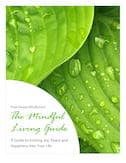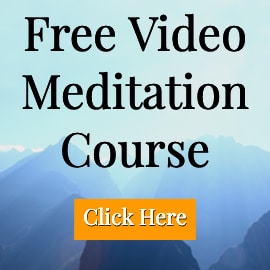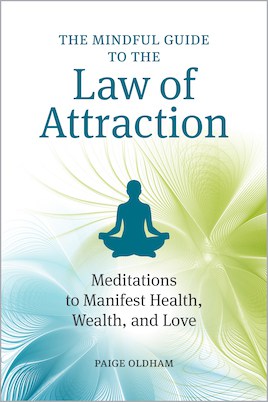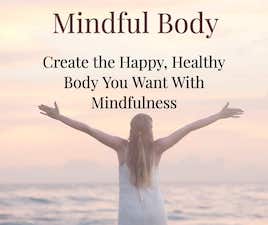It’s rare that I write a book review but I had to write this one. A friend of mine suggested that I read this book with a guarantee that I would laugh my ass off while learning something. How could I pass that up?
I wasn’t disappointed.
 Misadventures of a Garden State Yogi is awesome. Brian Leaf brings you through his “humble quest to heal my colitis, calm my ADD and find the keys to happiness.”
Misadventures of a Garden State Yogi is awesome. Brian Leaf brings you through his “humble quest to heal my colitis, calm my ADD and find the keys to happiness.”
Whether you’re a long-time yogi or think a “down dog” is a command to get your dog to sit, this book is for you. I wish he had written it about twenty years ago but he hadn’t experienced his journey at that point and I wouldn’t have been ready for the messages.
Everything happens at the perfect time.
I loved the book because I could completely identify with his overachieving programming and how that only led to a misaligned life, physical illness and unhappiness and how he unwittingly discovered yoga and its teachings to turn his life around.
His storytelling had me in tears of laughter as he details his own internal dialogue in so many uncomfortable situations. You can feel yourself there, thinking the same things and it’s hilarious.
He takes you from his first semester at Georgetown in 1989 where he signs up for a yoga elective because it’s the most exotic class he could find to a road trip of personal discovery that leads effectively to a decade of personal development and healing on many physical and emotional levels.
While I was laughing through his stories, I was focusing on how I could implement the lessons he learned in my own life. Concepts like how:
- An overachieving nature is simply a quest to please other people
- The intimate link between our emotions and our physical body
- Repressing feelings for so long that we no longer realize we even experience them and our bodies scream for a release
- Our egos live in our heads and are incapable of feeling feelings
- The happiest and most effective way to live involves constantly asking, “What is most real?” at any given moment and not trying to change it.
Throughout the book, Brian uses his life story to describe how he learned about the Eight Keys to Happiness. From my own life experiences, I have to agree with him.
The Eight Keys to Happiness
- Do yoga. And if you already do yoga, do more yoga.
- Follow your heart.
- Cultivate and follow your intuition.
- Apply at least three pieces of Ayurvedic/yogic wisdom to your daily schedule.
- Meditate. And if you already meditate, meditate more.
- Connect with your heart, and interact with others from that place.
- Speak and act from your true self.
- Become most real.
Below is a Q&A with Brian to help clarify some of these Keys:
 You offer eight Keys to Happiness throughout your book. One of them is “Follow Your Heart.” What advice do you have for people who would like to start living in that way?
You offer eight Keys to Happiness throughout your book. One of them is “Follow Your Heart.” What advice do you have for people who would like to start living in that way?
The best way to do this is, as often as possible, to ask the question, “What do I really feel right now?” The question is not, “What should I feel right now.” It’s not even, “What is appropriate right now.” It is, “What do I really feel, and what do I really want?”
Asking these questions helps you get in touch with who you really are and what you’re really meant to do. Feel for answers that give you a deep sense of rightness, passion, and vitality. And, by the way, following your heart does not automatically mean giving up your nine-to-five job at the insurance company or leaving your spouse and fourteen children for your twenty-three-year-old Zumba instructor.
Sometimes the boring job at the insurance company is just right. You might need the paycheck that feeds your family and allows you to spend happy evenings and weekends together. Or not.
Following your heart only means tuning into and following not your ego, not your mind, not what you’ve been told is right, but a deep feeling of passion, vitality, and rightness.
You say that yoga is your calling. Do you believe that everyone has a calling?
Yes, I believe that everyone has a calling. It could be to teach math, practice medicine, build schools in India, raise a family, or trade stocks. I believe identifying and following one’s calling brings happiness and a sense of peace. Plus, when we are following our calling, we serve the world best, like playing the right part in a giant symphony.
You speak quite a bit about listening to intuition. How can you tell when an urge is intuition and when it is simply thoughts or desires?
For me, the litmus test of the legitimacy of an urge or intuition is to do yoga and meditate. Yoga quiets my mind and engages my heart and intuition. If after yoga and meditation an urge or concern goes away, it was just a passing whim. But if during practice, it builds and intensifies, and especially if all other thoughts fade away, leaving one urge shouting to be heeded, then I know I must follow it.
In your book, you share ten yogic yamas and niyamas (Ayurvedic/yogic wisdom) and encourage readers to pick one to follow for a week to see how they feel. What are the yamas and niyamas and where do they come from?
The yamas and niyamas are the Ten Commandments of yoga. They come from the Yoga Sutras of Patanjali, written about 2100 years ago. Patanjali is very famous as the author of the sutras, but in reality, he was probably just compiling and categorizing existing knowledge. He was sort of the yogic Wikipedia of ancient times.
The ten yamas and niyamas are:
- non-violence (ahimsa)
- truthfulness (satya)
- non-stealing (asteya)
- moderation (brahmacharya)
- non-covetousness (aparigraha)
- purity (shaucha)
- contentment (santosha)
- discipline (tapas)
- self-observation (swadhyaya), and
- meditation on the divine (Ishvara-pranidhana).
Swami Kripalu, the namesake of Kripalu yoga, taught that the yamas and niyamas are like beads on a necklace — if you pick up one, they all follow along. Actually, he said it a bit more poetically, “By firmly grasping the flower of a single virtue, a person can lift the entire garland of yama and niyama.” In other words, dedicated practice of any one of the yamas or niyamas will result in cultivation of them all. This works because, for example, if you follow non-harming, you can’t lie to a friend because at some level the lie would harm her.
Another one of your Keys to Happiness is “Meditate.” What advice do you have to offer those who are new to meditation or having a hard time sticking with it?
Meditation can be torture at first. It can be just terrible. But it gets much easier. The key is taking small bites. Start with only five minutes. And use the breath as a point of focus. Otherwise, meditation can be five solid minutes of the mind obsessing on lunch.
I remember one time meditating in a very sacred room at the Kripalu yoga ashram and feeling really guilty because my mind was so ridiculously noisy — my thoughts were so loud in my head that I forgot that no one else could hear them.
What do you mean by “Becoming Most Real?”
Becoming most real means becoming aware of what we are doing and feeling all the time. It means noticing not only our imagined or desired reality —the one we’re cooking up in our mind to soothe our discomforts and fears — but also the reality that actually exists, the one that is most real.
Here’s an example. Yesterday I was stressed about a deadline for a few chapters I owed my agent. I was all worked up and feeling pretty miserable. I figured that if I could just stop feeling stressed and feel relaxed instead, that then I’d be happy. So I breathed deeply, I meditated hard. I struggled. I pushed and fought — trying to talk myself out of it, trying to shift awareness, trying to trick myself, if necessary, into switching from feeling stressed to relaxed.
But then I asked, “What is most real?”
I noticed that I was feeling tense and stressed. That I knew already. But I also noticed that I was struggling to change things, trying to force myself to feel relaxed. And that was the key. Because then I went from being lost in the struggle to being aware of the struggle. I went from identifying with the struggling to identifying with my deeper self that sees the struggle. For a moment I was grounded in the unflickering flame of my true self. For a moment I achieved the very aim of yoga.
You can practice being most real by asking yourself, “What am I trying to feel right now, and what am I actually feeling right now?” These two are related: What you are trying to feel right now, or more specifically, the fact that you are trying, is what you are actually doing; it is most real. Most real is not the state you are trying to achieve but the state you are in. That’s where you’ll find the greatest vitality, peace, and happiness.
Check out Misadventures if you want to laugh your ass off while discovering how to be infinitely happier.
Create the life you want: Combine the law of attraction with mindfulness
The law of attraction suggests that our positive or negative thoughts bring about positive or negative experiences. My latest book, The Mindful Guide to Law of Attraction, pairs that belief with the powerful practices of mindfulness. Through intentional breathing, writing, and engaging, you’ll hone a method for manifesting health, wealth, and love―the elements of happiness.
Let the law of attraction work for you by adopting its basic steps of identifying and visualizing the things you desire. Then use 45 practical meditation techniques included in the book to achieve awareness. By concentrating your positive energy on obtaining your wants, you’ll give yourself permission to receive them.
To your happiness! ~Paige

You can find this book at Amazon, Barnes & Noble, Books-A-Million, and Indigo.







 The Mindful Living Guide
The Mindful Living Guide




I can definitely connect with Brian. I’m a yogini too. Discovered yoga after I thought my life was just a series of events looping again and again, corporate dealings, traveling to different places for work until I become jaded. Applying the principles and activities of yoga into my life changed me into a better person and I’m enjoying it.
This book sounds like a must read. Namaste!
Your journey sounds very similar to mine Ada. Among its endless benefits, yoga adds a sense of mindfulness to everything we do. Like helping to realize that we’re on a treadmill going nowhere and not being very happy. The first step of any change is awareness of the present situation.
Namaste!
Thanks for this recommendation Paige! This will be on my birthday wish list.
Hope you enjoy it as much as I did Lisa!
I’m a yogini too and an athlete as well. Heard that yoga can greatly help to boost energy but later on realized that it has so many health benefits in terms of physical, mental to emotional health aspect.
That’s so true Amanda! It’s hard to explain to people how yoga can powerfully change your life on so many levels. It’s infinitely more than just physical exercise. My experience has been that this change happens in such small increments that it’s almost imperceptible – until you look back and realize how far you’ve come. I’ve applied many of the lessons I’ve learned through my yoga practice to many aspects of my life to be a happier person and feel great.
Looks like a great book! I really enjoyed reading about the ten yamas and niyamas. I’ve never heard of them before. I try to do a little yoga everyday. This summer, I hope to join a class again.
Thanks Paige and Brian!!
I’ve read about the yamas and niyamas in Yoga Journal and other places but hadn’t thought to incorporate them into my life so intentionally as Brian suggests (which, I think, is a great idea).
After practicing yoga for so long, I’ve learned at a very deep level that yoga is so much more than mere physical exercise. It’s a way of thinking, feeling and being. Joining a class and being part of that in a group setting often magnifies its power. I hope the class works out for you Betsy!
I often wish I had the opportunity to attend more classes. Living in the middle of nowhere, I’ve created a home practice that I love. In the rare instances when I do attend a class, my practice takes a leap forward with the guidance of great instructors.
Namaste Betsy!
Kay; one of my guiding thoughts is that forgiveness is the most selfish of acts. It takes away the hurt and diminishes the offending person in your mind so that future episodes have less impact. We don’t have to tell those who hurt us that we have forgiven them. Does it make sense when I say that sometimes we like to be hurt and to feel sad. This is not meant in an uncaring way.
I agree with you Joe. Forgiving others helps us, not the person we’re forgiving. It helps us to release the pain and burden we carry around with us that the other person is usually completely unaware of.
Sometimes people subconsciously seek to be hurt or feel sad due to feelings of being unworthy or not enough. That can be an opportunity to forgive ourselves and become more open to seeing the joy in our own lives.
Thanks so much for your comment!
I think the attempting to please others can be one of the most destructive things someone faces. Parents especially dont recognise the untold pressure that they apply with flippant comments and the damage that they can be doing!
I completely agree with you Kay. The same applies to teachers. I still remember a comment made to me by my kindergarten teacher that made me feel about one inch tall at the time. And my parents certainly added to it over the years. As I’ve noticed the comments they’ve made to my own kids, I’ve significantly limited their exposure to my kids.
As a parent, I’m certainly not perfect but I’ve learned to either bite my tongue or apologize immediately when I say something stupid to my little angels. They’re so much smarter and open than we give them credit for.
I read some scientific research on brain development that showed how kids basically take in everything they see and hear as fact until about the age of six or seven because their brain hasn’t developed the capacity to weed things out. So comments that don’t mean much to adults with filtering capacities mean the world to little kids.
We’re programmed to seek acceptance from birth (it’s what keeps us alive in that first year). As we get older, it’s a matter of deciphering what is following social norms vs. what is good for us.
It’s not our job to make other people happy. We each carry the responsibility to make ourselves happy.
A great post. A fabulous way to deliver a message; as of course is the book. It is on my list.
Thanks so much Joe! Hope you enjoy it as much as I did!
This is one I need to read. It sounds funny and like it will give me the next insights that I can apply to my own practices – wonderful!
Julie,
It was a great read and one I’ll definitely re-read to pick up the nuggets I’m sure I missed the first time through. This book helped to open me up to new ways of seeing things that I thought I already “knew.”
Thanks so much!
Anything that would lead me to laugh my ass off and be infinitely happier is a no brainer. I’m ordering it now!
That’s awesome Galen! I was surprised at how quickly I read the book. I couldn’t wait to find out what happened on the next step of his adventure.
This book gave me some great ideas for the book I’m starting on about my own story.
Morning Paige,
Great read to start off my day. Ahh… Yoga. I have tried and tried and yet again tried to make this part of my life. I was turned on to Yoga back in the 90’s when competing as an Expedition racer in long distance multi-sport events all over the globe. I knew it was good for my body then….and I know it’s good for my body now. But I am still blocked.
My wife is a 5-7 day a week Yoga practitioner and yet I am still blocked.
I am close friends with the great grandnephew of Paramahansa Yogananda but still I am blocked.
Yoga will take firm hold of me one day – when I am willing and open enough I imagine.
The point of the above is – When Brian talks about “Being real” he already has an awareness of what that means for him. He knows where to GO to find that inner space. I believe the majority of the world never even takes the time to search for that space….that inner place where our own personal questions about are searched out and answered.
For me Yoga will most likely become part of my life when I slow down enough to let it take root.
Have an amazing day.
Alan
So much of this is about slowing down and being mindful on many levels. It sounds like yoga doesn’t stick for you because you don’t have a good reason for it. Nothing happens without a big “why” behind it. Yoga sticks for me because I’ve felt its transformative effects on my body, mind and emotions and I couldn’t imagine living without it.
I agree with you that most people will never slow down to identify what’s going on inside them – what “being real” means for them. These same people can spend a lifetime looking for things and people outside of themselves to cure what ails them when the most simple cure is inside of them. I spent decades doing this before I learned the lessons.
Yoga is absolutely amazing – so much more than physical exercise. Its treasures will always be there for you when you’re ready.
Namaste
Glad you liked the book Paige, it’s a classic imho.
I had little intention of reading my copy, but somehow it lured me in and it’s probably the most enjoyable book I have read in the last couple of years.
Now if I could only get my **** together and do a review like you have all would be good 😉
Tim,
Thank you so much for recommending this book to me! After being in tears of laughter in the first few pages, I couldn’t put it down.
Reading a whole book and writing a review was much easier when I had to spend hours on a plane flying to Florida and back last week. In my normal life with kids and work, this is generally an impossibility.